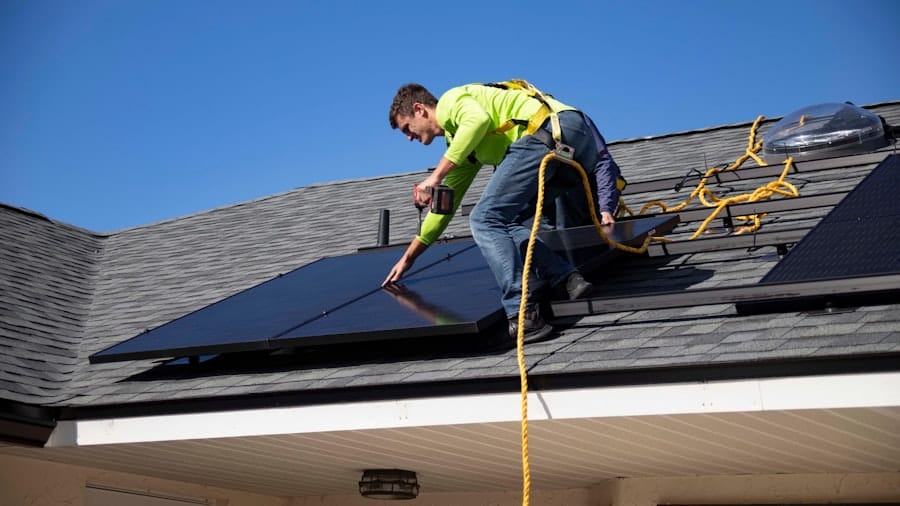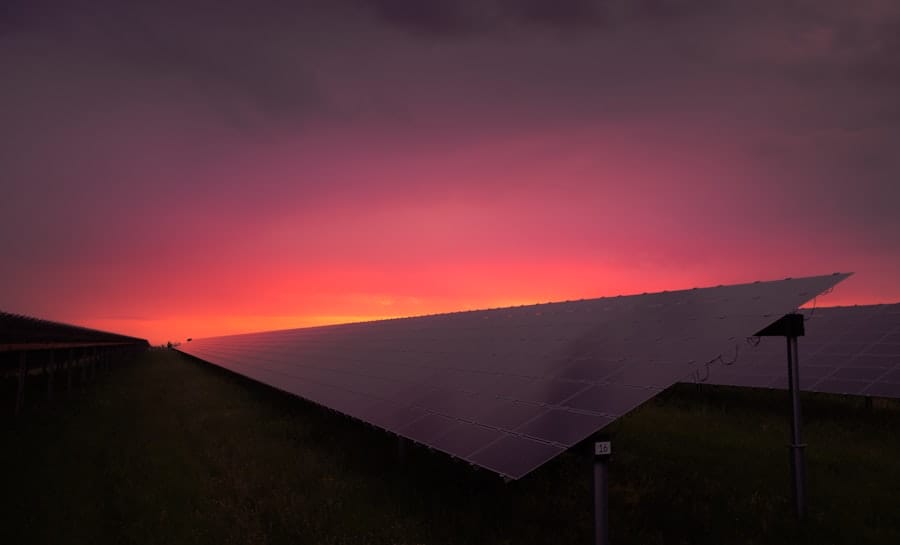IV curve testing is a critical process in the solar panel industry used to assess the performance and efficiency of photovoltaic modules. The IV curve, or current-voltage curve, graphically represents the relationship between a solar panel’s current and voltage output under various conditions. This testing method involves measuring current and voltage at multiple points on the solar panel to generate a curve that illustrates its performance characteristics.
The IV curve testing process is vital for understanding solar panel behavior under different environmental conditions, including varying levels of solar irradiance and temperature. By analyzing the IV curve, manufacturers and researchers can obtain valuable data on panel efficiency and performance, enabling them to make evidence-based decisions regarding design improvements and optimization strategies. IV curve testing serves as a fundamental tool for evaluating solar panel quality and reliability, as well as identifying potential areas for enhancing efficiency and power output.
Key Takeaways
- IV curve testing is a crucial method for evaluating the performance of solar panels and understanding their behavior under different conditions.
- Maximizing solar panel efficiency is important for increasing energy production and reducing overall costs in solar power systems.
- Factors affecting solar panel efficiency include temperature, shading, soiling, and aging, which can all impact the overall performance of the panels.
- IV curve testing provides valuable insights into the performance and health of solar panels, helping to identify issues and optimize their efficiency.
- Conducting IV curve testing involves measuring the current-voltage characteristics of a solar panel under various conditions to assess its performance and identify any potential issues.
Importance of Maximizing Solar Panel Efficiency:
Boosting Energy Production
In addition to increasing energy production, maximizing solar panel efficiency also contributes to environmental sustainability by reducing the need for fossil fuels and lowering greenhouse gas emissions.
Environmental Sustainability
As the demand for clean and renewable energy sources continues to grow, improving the efficiency of solar panels becomes increasingly important for meeting energy demands while minimizing environmental impact.
Achieving a Sustainable Future
Therefore, investing in technologies and methods to enhance solar panel efficiency is essential for advancing the adoption of solar energy and achieving a more sustainable future.
Factors Affecting Solar Panel Efficiency:

Several factors can influence the efficiency of solar panels, including sunlight intensity, temperature, shading, and soiling. Sunlight intensity plays a significant role in determining the output of solar panels, as higher levels of sunlight result in increased electricity production. However, variations in sunlight intensity throughout the day and across different geographic locations can impact overall energy yields.
Temperature is another critical factor affecting solar panel efficiency, as high temperatures can reduce the performance of solar cells. When exposed to heat, solar panels may experience a decrease in voltage output and overall efficiency. Additionally, shading from nearby objects or obstructions can limit the amount of sunlight reaching the solar panels, leading to decreased energy production.
Furthermore, soiling caused by dust, dirt, or other contaminants can accumulate on the surface of solar panels, reducing their ability to absorb sunlight and convert it into electricity. These factors highlight the importance of considering environmental conditions and potential obstructions when designing and installing solar energy systems to maximize efficiency and performance.
Benefits of IV Curve Testing:
| Benefits of IV Curve Testing |
|---|
| 1. Identifies shading and soiling issues |
| 2. Helps in detecting cell and module defects |
| 3. Assists in determining mismatch losses |
| 4. Aids in optimizing system performance |
| 5. Provides data for warranty claims |
IV curve testing offers several benefits for evaluating and optimizing the performance of solar panels. By conducting IV curve testing, manufacturers and researchers can gain valuable insights into the behavior of solar panels under different operating conditions. This information is essential for identifying opportunities to improve efficiency, troubleshoot issues, and enhance overall performance.
Furthermore, IV curve testing provides a comprehensive understanding of how solar panels respond to changes in sunlight intensity, temperature, and other environmental factors. This knowledge is crucial for developing strategies to maximize energy production and ensure reliable operation of solar energy systems. Moreover, IV curve testing enables accurate performance measurements and comparisons between different types of solar panels, allowing stakeholders to make informed decisions about product selection and system design.
Ultimately, the insights gained from IV curve testing can lead to advancements in solar panel technology, resulting in more efficient and reliable solar energy solutions.
How to Conduct IV Curve Testing:
Conducting IV curve testing involves measuring the current and voltage output of a solar panel at various operating points to create a graphical representation of its performance characteristics. To perform IV curve testing, specialized equipment such as a solar simulator, electronic load, and data acquisition system is required. The first step in conducting IV curve testing is to set up the solar simulator to replicate sunlight conditions and expose the solar panel to consistent light intensity.
Next, the electronic load is connected to the solar panel to control the current flow and measure voltage output at different levels of current. The data acquisition system is used to record the current-voltage measurements and create the IV curve graph. During the testing process, it is essential to capture data under different environmental conditions, such as varying levels of sunlight intensity and temperature, to assess how the solar panel performs under different scenarios.
By conducting IV curve testing under a range of conditions, it is possible to gain a comprehensive understanding of the solar panel’s behavior and identify opportunities for optimization.
Analyzing IV Curve Testing Results:

Understanding the IV Curve
The IV curve graph illustrates how the current output varies with changes in voltage under different operating conditions. By analyzing the shape and characteristics of the IV curve, it is possible to identify key performance indicators such as maximum power point (MPP), fill factor (FF), and open-circuit voltage (Voc).
Key Performance Indicators
These parameters are essential for assessing the overall efficiency and performance of a solar panel. They can be used to compare different types of solar panels or evaluate changes in design or operating conditions.
Identifying Areas for Improvement
Analyzing IV curve testing results allows stakeholders to identify potential issues or inefficiencies within a solar panel system. By examining how the IV curve responds to changes in environmental conditions, it is possible to pinpoint areas for improvement and develop strategies to enhance overall performance and energy production.
Implementing Changes to Maximize Solar Panel Efficiency:
Implementing changes to maximize solar panel efficiency involves applying insights gained from IV curve testing to optimize system design, operating conditions, and maintenance practices. By leveraging the information obtained through IV curve testing, stakeholders can identify opportunities for improvement and implement targeted changes to enhance overall efficiency and performance. For example, based on IV curve testing results, adjustments can be made to system components such as inverters, tracking systems, or shading mitigation measures to maximize energy production.
Additionally, insights from IV curve testing can inform decisions about module placement, cleaning schedules, and maintenance procedures to ensure optimal performance over time. Furthermore, advancements in technology and materials based on insights from IV curve testing can lead to improvements in solar panel design and manufacturing processes. By incorporating findings from IV curve testing into product development efforts, manufacturers can enhance the efficiency and reliability of solar panels, ultimately driving progress in the renewable energy industry.
In conclusion, IV curve testing is a critical tool for evaluating and optimizing the performance of solar panels. By conducting IV curve testing and analyzing the results, stakeholders can gain valuable insights into how solar panels operate under different conditions and identify opportunities for improvement. By implementing changes based on insights from IV curve testing, it is possible to maximize solar panel efficiency, increase energy production, and advance the adoption of renewable energy solutions for a more sustainable future.
If you are interested in learning more about energy audits, you may want to check out this article on energy audit in Colombo. It provides valuable information on the importance of conducting energy audits and how they can help identify areas for improvement in energy efficiency.
FAQs
What is solar IV curve testing?
Solar IV curve testing is a method used to measure the current-voltage (IV) characteristics of a solar cell or module. It provides valuable information about the performance and efficiency of the solar panel under different conditions.
Why is solar IV curve testing important?
Solar IV curve testing is important because it helps to assess the overall performance and quality of a solar panel. It can identify any issues or defects that may affect the panel’s efficiency and output, and it can also provide data for optimizing the panel’s performance.
How is solar IV curve testing performed?
Solar IV curve testing is typically performed using a solar simulator to simulate sunlight. The solar panel is connected to a testing device, and a series of measurements are taken at different voltage and current levels to generate the IV curve.
What information can be obtained from solar IV curve testing?
Solar IV curve testing can provide information about the open-circuit voltage, short-circuit current, maximum power point, fill factor, and overall efficiency of the solar panel. This data can be used to assess the panel’s performance and to make informed decisions about its use and installation.
When should solar IV curve testing be performed?
Solar IV curve testing should be performed during the manufacturing process to ensure the quality of the solar panels. It can also be performed during installation and maintenance to verify the performance of the panels and to identify any issues that may arise.

